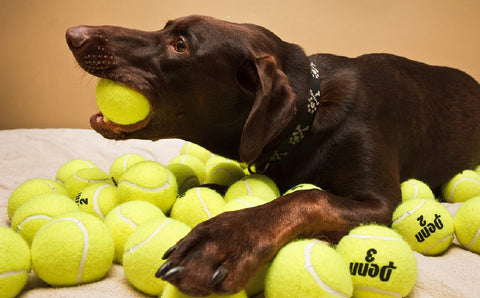Dogs, like humans, can exhibit hyperactive behavior from time to time. This excess energy can lead to various issues, including disobedience and destructive tendencies. As a dog behaviorist with a unique approach, I seek methods to address hyperactivity without relying on positive reinforcement because oftentimes the rewards (food, play, affection, etc) create even more excitement. Here are some strategies to help manage and improve a hyperactive dog's behavior:
1. Exercise and Mental Stimulation:
One of the most effective ways to manage hyperactivity in dogs is through regular exercise and mental stimulation. Engage your dog in activities like long walks, runs, or playtime in a secure environment. Mental stimulation, such as enforcing house rules, puzzle toys, or obedience training exercises, can also help tire out their active minds.
2. Establish a Routine:
Dogs thrive on routines. Creating a consistent daily schedule for feeding, bathroom breaks, and exercise can help reduce anxiety and hyperactivity. Dogs are more likely to relax when they know what to expect.
3. Provide Structure and Boundaries:
While you avoid positive reinforcement, it's essential to set clear boundaries for your dog. Use neutral or corrective commands to communicate what behaviors are unacceptable. Be consistent in enforcing these boundaries, and avoid mixed signals.
4. Socialization:
Proper socialization with other dogs can help reduce hyperactivity stemming from excitement or anxiety around other animals. Controlled interactions with other dogs can teach your dog to remain calm and composed in various situations.
5. Leash Training:
A well-behaved dog on a leash is easier to manage, especially in public settings. Utilize leash training techniques that align with your neutral approach to reinforce good walking behavior.
6. Consider Dietary Changes:
In some cases, hyperactivity may be linked to diet. Consult with a pet nutritionist to ensure your dog's diet is appropriate for their needs. Adjusting their food may help alleviate hyperactive tendencies.
7. Seek Professional Help:
If your dog's hyperactivity is severe or persists despite your efforts, consider consulting a professional dog behaviorist. They can provide guidance tailored to your specific approach and your dog's unique needs. You could also consider CBD or Indica Tincture oils to help relieve your dogs crate anxiety.
8. Patience and Consistency:
Improving hyperactive behavior in dogs often takes time and consistent effort. Be patient with your dog as they adapt to the changes in their structure and boundaries. Consistency in your approach is key to success.
Remember that every dog is unique, and what works for one may not work for another. As a dog behaviorist with a neutral approach, it's essential to adapt your methods to suit each dog's individual needs. By implementing these strategies, you can help your hyperactive dog become calmer and more well-behaved over time.








